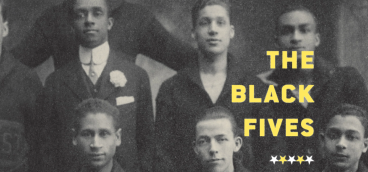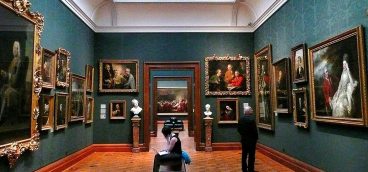Is Life Ahead or Within

Image source: Adobe
October 23, 2023
After meeting his doctor for his annual checkup, a 70-year-old patient told the doctor, “Checkups or no checkups, we all have to die one day. It’s just a question of when.” The doctor shook his patient’s hand and said, “Not when, but how.”
That brief exchange reveals not only two different attitudes toward life but two different views of death as well. On the one hand there is the patient’s view of life as a time with a statute of limitations. His concern is with longevity. He concedes that death is in everyone’s future, but it is not dated. For the patient, death has all the reality of an abstract noun.
The doctor sees death similarly as inevitable, but for him the time of death is not subjunctive. It relates to a specific cause: cardiac arrest, cancer, pneumonia, bullet wounds or a range of possible accidents. For the patient, life is basically a span of hopefully threescore and 10 years. For the doctor, life is subject to all the ills that “flesh is heir to” and can happen any time. Death for the doctor is not an abstract noun but the result of a condition when a person, in medical terms, ceases to breathe.
Whether you incline toward the patient’s or the doctor’s views of life and death, the most depressing apparent conclusion is that human beings are all “sentenced to an end of life” from unnamed causes as a result of having been born. This can leave people searching for life’s meaning in spiritual terms or simply resigned to the inevitable. Underlying both is the ongoing struggle to survive, which is the common challenge of existence.
The major religions to which people turn for insights into the human condition stress the consoling and transcendental values that belief provides — often associated with a life to come, which instills in the believer an orientation to an eternal present in his future, a heaven, a return or reunion with God the Creator.
In this essay, however, I’d like to explore two additional ways of life that are fulfilling in the present and rooted in choice. Like all human choices, they are made in time but also are capable of transcending it. Whether they are given further spiritual meanings or not by the choosers or by the readers of this essay is not my intent. If certain responses exceed my stated purpose, so be it.
The first choice is an expression of love through action or the imagination. I do not think it is presumptuous to say that each of us is capable of doing something well and of loving what we feel within ourselves when we are doing it. It could be singing (as it was with Luciano Pavarotti or is with my granddaughter Anna) or running (as it was with Wilma Rudolph) or dancing (as it was with Fred Astaire) or working with wood (as it was and is with a man I will describe shortly) or anything that awaits being done well. No matter what it is, it absorbs and satisfies us completely. We just love to do it, and we love it most when we are doing it well.
I have a friend who recently retired as a university official. During his entire tenure at the university, he enjoyed himself most when he found time to work in his woodshop in the basement of his home. He made not only useful things like chairs and bookcases but works of art as well. Just a few days after his retirement, he and his wife converted the living room of their home into his workshop. Previously, he could only create what he called “wood art” in his spare time. Now he could do it whenever he chose and for as long as he chose. It was (and remains) his primary love and interest. It was and is an activity that fulfills him totally in the creative dimension of his life. Time is irrelevant.
Similarly, a nurse just recently retired and purchased a stone home a few lots north of my own. Spending much of her retirement pay, plus some of her life savings, on a decades-old house when she could have traveled or chosen a time-sharing residence in a warm climate is not common. I learned only recently that she lives alone but has two grown daughters. But it appears that to Alice — I know her only by her first name — restoring a home to its original quality and beyond could be (and every day is) a dream of continual progress.
First, she had the stones cleaned and edged where needed to restore their original color and shape. She replaced the windows and window frames as well as the garage door. She reshingled the roof. She hired a landscaper to create a new lawn along with new flower beds. She had the driveway repaved. In essence, she recreated the exterior front lot of the house, including the front porch. Then she restored an incipient swimming pool in the backyard, which she filled with filtered salt water. When I passed the house one day while she was standing in the driveway and told her how beautiful the restoration was, she said with a smile, “Wait ’til you see the inside.”
Alice gave me the impression that what she was doing and had done was a truly crucial and pivotal period in her life. She seemed to be possessed by the same spirit that would possess artists or authors or dancers in the performance of the art they lived to create. Whether she would admit it or not, Alice was literally creating her own work of art. Like all artists, she was infusing her life into a projection of her tastes and choices in a house that would reveal her mark on it and would define it as hers, just as sculptures identify their sculptors, symphonies their composers, novels and poems their authors and plays their playwrights.
Whether it involves restoring a house or creating a painting, as Van Gogh did with the unique landscapes and inhabitants of the South of France, all artists put into their creations something of themselves, and they are the richer for it. And while they live, they live more bountifully. In a sense, they thumb their noses at death as an abstract noun or as a complete cessation of breath simply by choosing what they love to do and doing it. There may be obstacles, but obstacles have always been present where love is concerned. By choosing and doing what they love to do, the choosers prevail.
The second of the two choices for personal fulfillment is to make a life with one you love. Obstacles could exist here as well — family, age, ethnic or racial difference, as well as social status. The plight of Romeo and Juliet comes immediately to mind, along with its tragic consequences. It is one of the proofs of love that it challenges risk, as Romeo and Juliet realized, and their fidelity to that love is what immortalizes them. But it is one of the central truths of personal love that choice is often accompanied with mystery. Whether the one loved is someone met by chance or related, like a parent, brother or sister, is not decisive — at least not initially. But even when the relationship becomes undeniable and necessary, it can remain largely unexplainable.
Often when the happily married are asked what attracted or motivated them to choose one another, they find it difficult to put it into words. In the deepest sense, it cannot be put into words, which in itself is a testament to the truth that love does not lend itself to words — not completely. This is undeniably true with the happily married who may have been drawn to one another by attraction but whose voluntary union was based on choice.
How can a parent be drawn to one child more than to another — not in a spirit of competition or favoritism but in ways that do not lend themselves to explanation? The same may also be true for those who are totally unrelated. For example, from infancy to manhood, our son’s love for his godmother never lessened. Sixty years between them made no difference. They could sit in the same room together, say little or nothing at all and be perfectly happy. Once she even let him cut her hair. Their relationship was a love like no other. That same attraction may exist between a man and a woman and be profoundly true but inexplicable.
When a chosen but otherwise mysterious love is conjugal, it confirms a union where each one is indispensable to the other. Each sees in the other someone to care for, as well as someone who cares. It proves among other things that love in the deepest and dearest sense is rooted in need — the need of each for each. Such a love, which is mutual, leaves the lovers themselves grateful but unable to determine — let alone explain — what draws them irresistibly to one another. Perhaps the ultimate proof of their love would be that each would be lost, distraught and incomplete if or when separated by distance or death. In fact, such separations only would intensify it.
What is indisputable about a true and chosen love is that the lovers find their mutual completion only with and in one another. Time for them is synonymous with presence when life reveals itself in all its fullness to each of them.
The fulfillment of love in union creates a completion between the lovers that resembles in many ways how pursuing fulfillment through action completes those who do what they love to do. The individuals in both instances refuse to be time’s prisoners, while those who ignore the challenge and responsibility of love remain in servitude to what they need or want to survive. Whether they survive in penury, sufficiency or opulence, they remain the slaves of time.
The primary benefit that rewards those whose choices are motivated by love is that it redeems the choosers while they live. Life is no longer deemed worthwhile only by belief in some future reward or confirmation. It is completed in the act of loving that resulted from the choice, and the fulfillment stays within the chooser.













